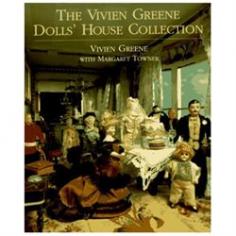Vivien Greene has for the last forty years been the undisputed authority on English dolls' houses of the eighteenth and nineteenth centuries. England inherited its interest in making and furnishing what were then called 'baby' houses from Holland and Germany at the end of the seventeenth century, but it was not until Mrs. Greene had undertaken her private research that it came to light that the British Isles also possessed a wealth of beautiful and interesting examples. In fact the current worldwide interest in dolls' houses by enthusiasts and museum departments alike can be traced directly to Vivien Greene's research in the post-war period. Since the 1940s, Vivien Greene has made hundreds of visits in pursuit of houses, recording their architecture and furnishings. Part of the results of her analysis were published in her two early books English Dolls' Houses of the Eighteenth and Nineteenth Centuries and Family Dolls' Houses. Her exploration of the subject also took her to the former German Democratic Republic, to the regions where most of the early toy furniture originated, and to the United States, where her name is well known. During the same period, she was herself acquiring houses, sometimes with their original furnishings, sometimes sadly neglected. Her collection grew, and eventually came to be housed in the Rotunda, a specially designed building in the garden of her house at Oxford, which for many years has been open to those interested on summer Sunday afternoons. Famous throughout the international community of collectors and enthusiasts, the Rotunda collection draws expert visitors from all over the world. Now that dolls' houses have come to be widely appreciated, it ismost unlikely that a private collection of this quality, size and variety could ever be made again. This book offers a fully illustrated view of all the houses in this unique museum and their contents, with Vivien Greene's own


